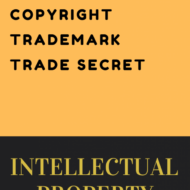Posted by Managementguru in Business Management, Intellectual Property Rights, International Business, Principles of Management, Technology
on Mar 26th, 2014 | 0 comments

The Idea behind Patent Protection In product markets, the problem of imitation poses a great problem for innovators who are deprived of enjoying economic profits fully. If imitators are able to move in rapidly and capture a substantial share of the market, the initial profits earned by innovators may not be sufficient to cover their costs and risks in the long run. However, a substantial delay between the time of innovation and successive entry by competitors may provide the pioneers with decent profits and make invention and innovation a more attractive activity. The patent system, by establishing a period of time during which the firm faces reduced competition, increases the expected return for innovative effort. Product and Process Innovations: A nation by stimulating research and development can increase the prospects of product and process innovations. Governments can encourage such innovations by granting patents. Three criteria must be satisfied to obtain a patent: The invention must be new It must not have been known to the public before the inventor completed it for more than one year prior to a patent application It must be useful and must be non-obvious Picture Courtesy: Basics What are Patents? Patents confer the exclusive right to the use of an idea for a long period (which varies between nations,say,in countries like India, it is seven to fourteen years, depending on the nature of the product) within which the innovator might be able to recover his initial investment. Another reason to grant patents is to provide for widespread disclosure of new ideas and techniques. The main objective of patent protection is to encourage research and development. Patents: Encourage research and invention Induce an inventor to disclose his discoveries instead of keeping them as a secret. Offer a reward for the expenses of developing inventions to the state at which they are commercially practicable; and Provide an inducement to invest capital in new lines of production Granting of Patents: The idea behind granting of patents thus is to benefit the society. Developing countries have to offer patent protection, the lack of which has made many foreign firms shy away from investing in core sectors like pharmaceuticals and biotechnology in these nations. As a result, people of these countries are forced to buy life saving drugs like those for cancer and have to pay ruinous prices. Once patent protection is available, there is a possibility for manufacturing most of the drugs that are being imported, eventually leading to a fall in the price levels. One of the difficult aspects of patent law is the principle that, whether a patent is to be issued to the person who conceives the idea or who first files for a patent. Another international issue involving patents is that, countries allow firms to steal and copy protected ideas, due to lack of severe legal enforcements or lack of interest. Either way it proves detrimental to the interest of the patent holders and such violations have to be strictly prohibited. Note: THE PATENTS ACT, 1970: An Act to amend and consolidate the law relating to patents The Patent Amendment Act,2005 The Patent Rules,2003 and Amendment Rules,2006 are some of the laws that protect patents in...

Posted by Managementguru in Business Management, Economics, International Business, Principles of Management, Technology
on Mar 26th, 2014 | 0 comments

Transfer of Technology- Commercialisation Vs.Benefit The total influx of technology in underdeveloped countries is from the advanced capitalist countries for obvious reasons, which will be the highlight of this discussion. Multinational corporations play a vital part in technology transfer, the motive being profit maximization for the parent company through their subsidiaries. These corporations act as the principal instrument of technology transfer, either through their subsidiaries or through contractual agreements made with developing countries. The idea is to bring mechanized processes and equipments that are not locally available. Dominance of Technology Supplier: The technology supplier usually takes the upper hand owing to his monopolistic strength that arises from the patent protection for differentiated products and processes. Very often, the terms and conditions of transfer are arbitrarily settled under highly imperfect market conditions by the technology supplying multinationals. Advanced nations have the advantages of reduced population density, even distribution of national wealth, high standard of living, more infusion of capital into research and development, availability of skilled personnel inclined towards research etc. Dependency of Developing Nations: Developing nations on the other hand are subject to the pressures of high population density, uneven distribution of economic wealth (poor people become more poor and the rich even richer), moderate or low living standards etc. Capital drain occurs due to heavy borrowings from the World Bank which leads to increase in the social overheads. In such a situation, it is next to impossible for a developing nation to pump capital into activities concerning research. Bargaining Power of Developing Nations: The bargaining power of developing nations is weak, as they have no access to information about alternate technologies and their sources nor the necessary infrastructure to evaluate the appropriateness of equipments, intermediates and processes. Moreover, the large part of the influx of technology in developing countries is in response to the policy of industrialization through import substitution. Transfer of technology from the developed to the underdeveloped countries is made in a number of ways. They are classified into two broad categories, viz., direct mechanism and indirect mechanism. The direct mechanism includes transfer of technology through banks, journals, industrial fairs, technical co-operation, movement of skilled people etc. Here there is a choice for the developing nation to select the appropriate technology that best suits their requirement. However, this is not the principal form of technology transfer that advanced nations would prefer. Price of Technology: The indirect mechanism implies technology transfer in a “package” or a “bundle” containing technology-embodying equipments, industrial properties like patents and trademark, skill, equity capital, etc. In this system, a local enterprise negotiates with multinational corporations for transport of the required elements of technology, and the terms and conditions are settled through a process of commercial transaction. Since the trading partners are unequal, the terms of contract are invariably restrictive and the price extended for the technology unreasonably high. All the underdeveloped countries, which have opted for growth along the classical path of capitalist development, are in a position to invite multinational corporations, if for no other reason than at least for the diffusion of...

Posted by Managementguru in Business Management, Decision Making, Human Resource, Principles of Management, Strategy
on Mar 23rd, 2014 | 0 comments

Strategy implementation is the transformation of chosen strategy into organizational action so as to achieve strategic goals and objectives. The journey towards success is a saga or penance, where your effort and concentration is focused only on achieving the goal. It can be compared to the blinkers of a horse to give direction and avoid distractions. Proper resource planning is the key factor that gives a practical shape to your strategies. The available resources should be put into optimum use. Corporate Resource Planning: Resource planning at the corporate level comprehensively covers the planning for physical resources, human resources, financial and intangible or intellectual resources like patents, copyrights, technology, trademark etc., at the macro level of the firm. These are needed for the corporates to achieve their vision and also give direction to the departments at the functional level. These resources are allocated after giving due consideration to the industry’s cycle position, competitor strength, technological changes in the industry, market share and the type of competition in the industry. Economic Models with Value Additions: For instance, automobile owners have tapped the customer psychology and are concentrating more on producing bug cars that is very appealing to the upper middle class families, since a four wheeler is more comfortable and safe to drive, well within the budget range, ideal for a nuclear family and at the same time serves the purpose of a status symbol. So, these car manufacturers become direct competitors for two wheeler producers. Even if say, 25 to 30 percent of two wheeler population is shifted to four wheeler usage it is a huge success to the car manufacturers. Tata Nano car, a brain child of Ratan Tata is one of its kind. He has capitalized on the middle class Indian frame of mind to go for economic models with value additions. “Nothing is permanent except change”, so in this fast moving business arena all business persons are subjected to the necessity of thinking new, if not big. Corporates concentrate more on their strategic business units which serve as functional units and also a part of an organization, say a factory or a showroom. The resources for each of these business units have to be planned. The human resource department has to play its part in a promising way as human personnel are the critical success factors of an organization that manipulate other resources efficiently. Product and Process Innovations: Product and process innovations are the need of the hour and corporates are spending huge amounts on research and development of new products and processes. It has to be kept in mind that the innovations have to reach the markets quickly in order have an edge over your competitors. Identify your strength Tap the unidentified needs of the consumer Allocate management responsibility for each task Set your priorities by resource rationing Test your key assumptions Whether your product is acceptable in the market Whether the technology is updated All of these help you in forming a strategic platform upon which strategic implementation is done. Rational and realistic assumptions are the basic premises on which your decisions have to be based. Adequate finance, machinery and maintenance, labor force, marketing mix, your product strength, critical success factors of your organization, everything has to be thoroughly analyzed and put into action for successful strategic implementation. Related Videos… Alternative Competitive Advantage Introduction to Strategic...






